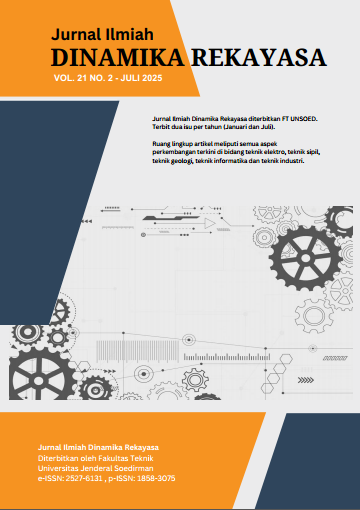Experimental Analysis of The Flexural Behavior of Reinforced Concrete Frame Beams with Variations in Compression Reinforcement
DOI:
https://doi.org/10.20884/1.jidr.2025.21.2.19Keywords:
beam reinforcement frame system, single press reinforcement, double press reinforcement, bending strong capacityAbstract
Reinforced concrete is a composite structure combining concrete as the primary compressive element and steel reinforcement to resist tensile forces. In reinforced concrete beam systems, optimizing the use of reinforcement is crucial for structural efficiency. This study aims to analyze the effect of reinforcement configuration on the flexural capacity of concrete beams by comparing single and double compression reinforcement systems. An experimental method was employed using four beam specimens measuring 124 cm × 15 cm × 20 cm, designed with concrete mix proportions following SNI 03-2834-2000 standards. The variations included STR T25, STR T50, STR G25, and STR G50, categorized by the type of compression reinforcement and spacing. Test results revealed that the highest flexural strength was achieved by STR G25 (838,474.985 kg/m³), followed by STR T50, STR G50, and STR T25. Beams with double compression reinforcement and closer spacing demonstrated superior performance in resisting bending forces. This research confirms that appropriate reinforcement configurations significantly enhance the flexural capacity of reinforced concrete beams while promoting material efficiency.







